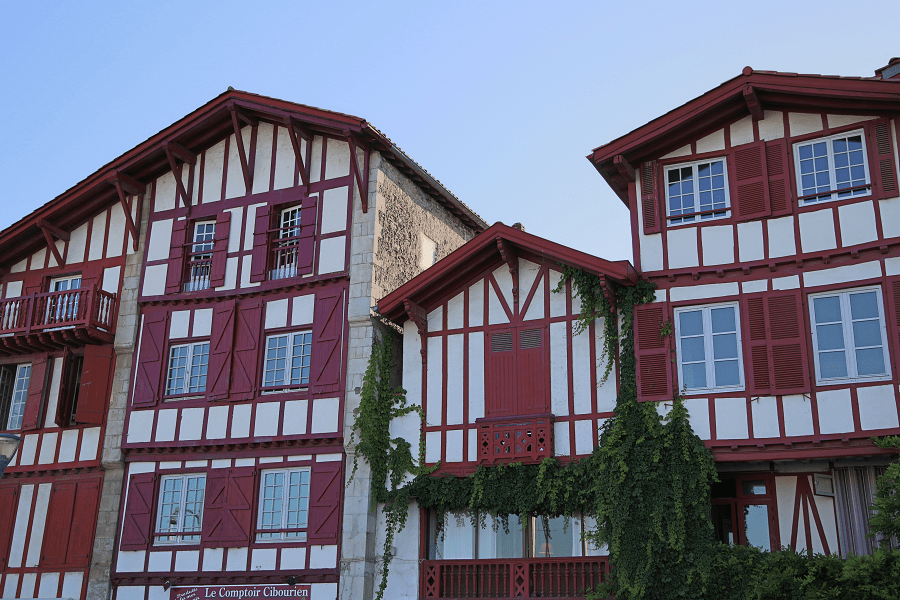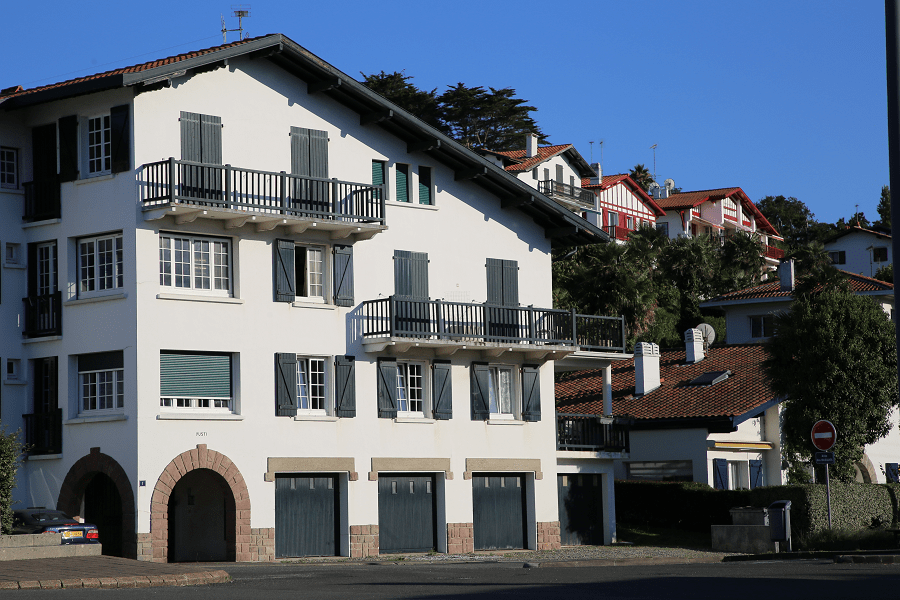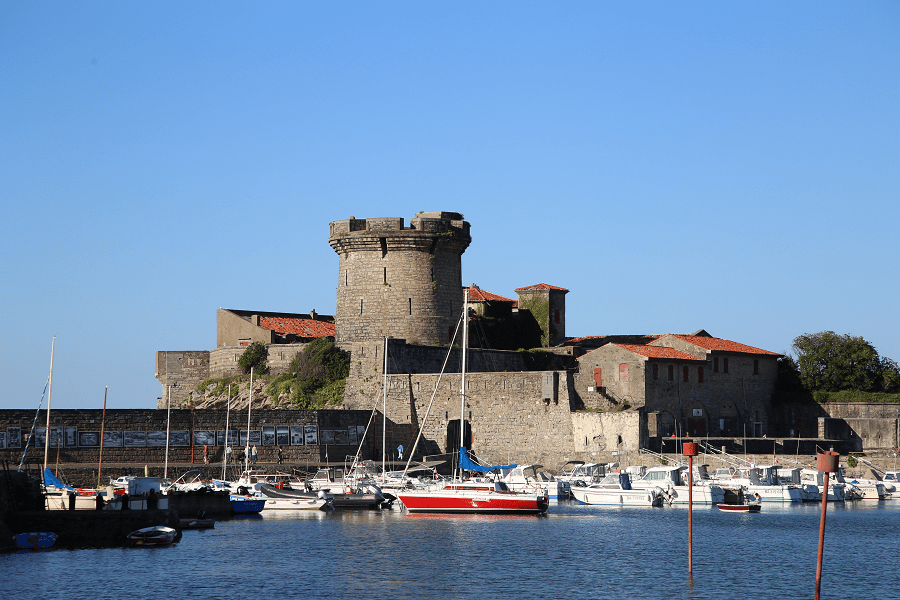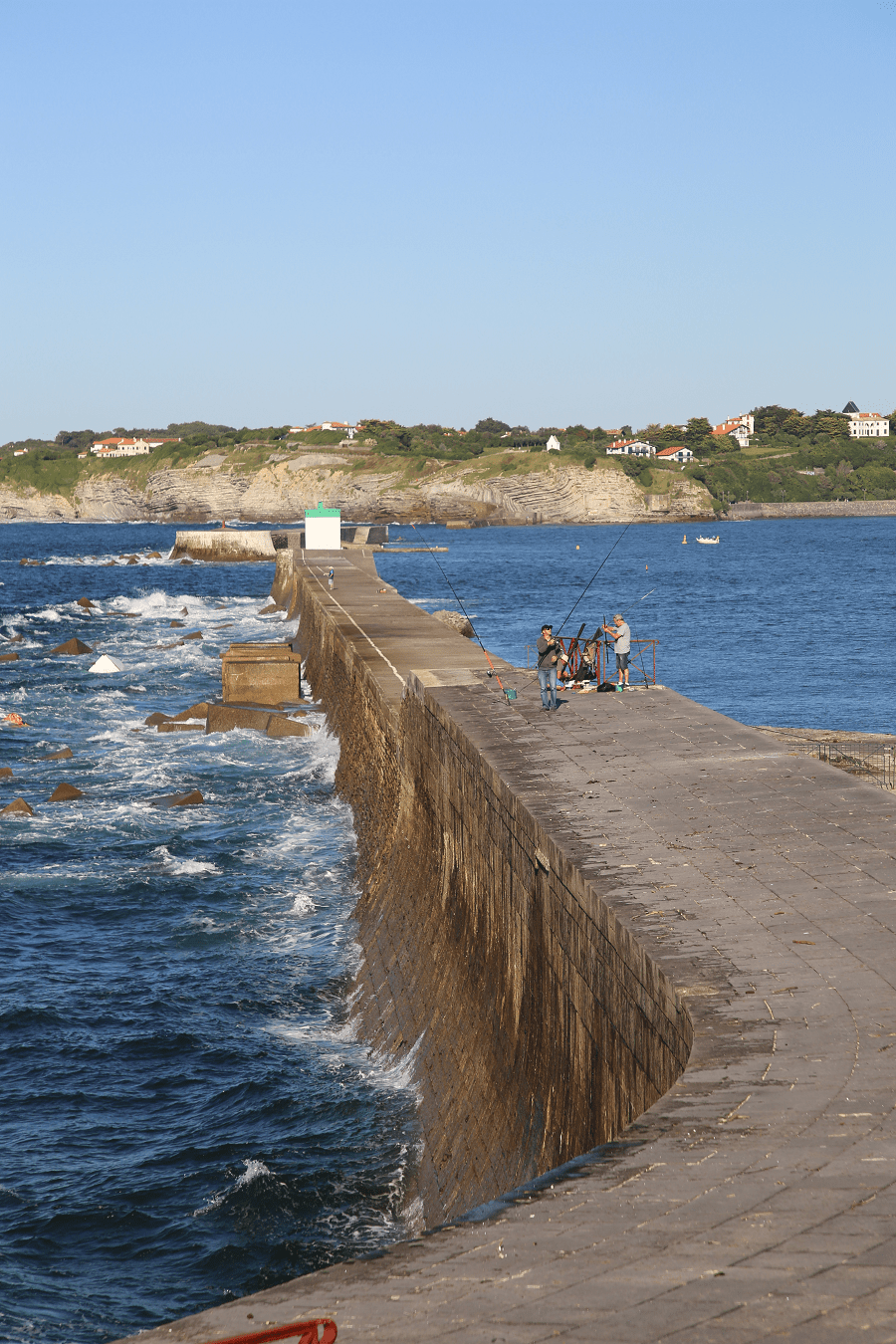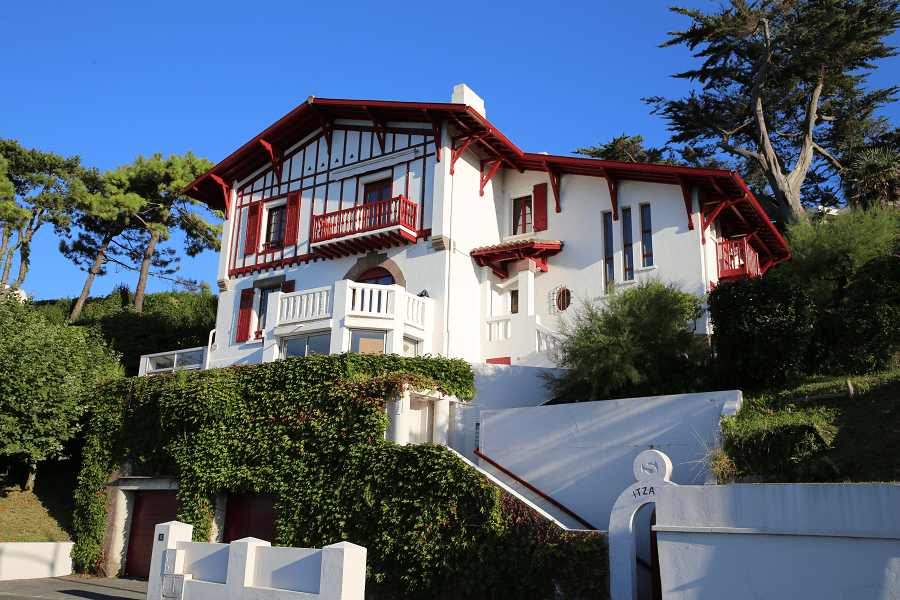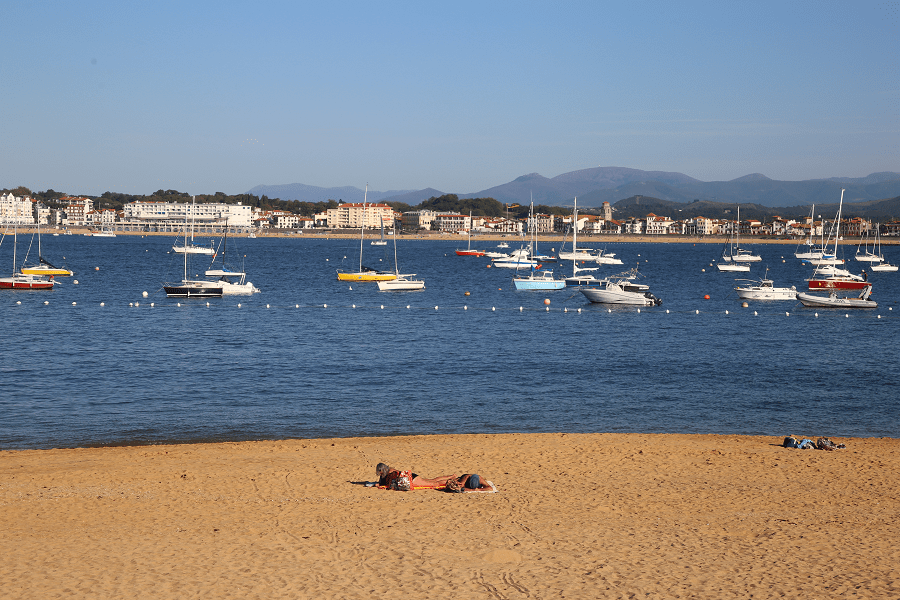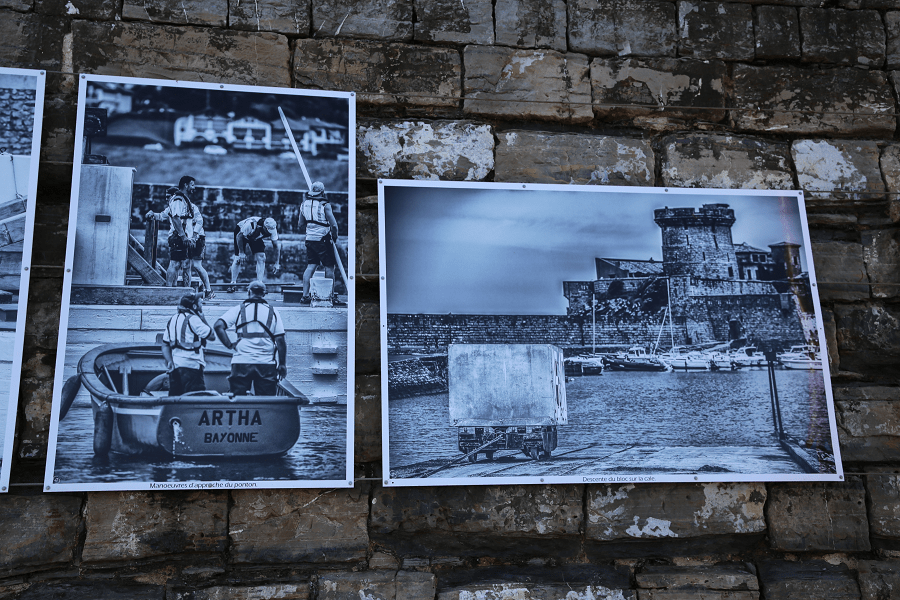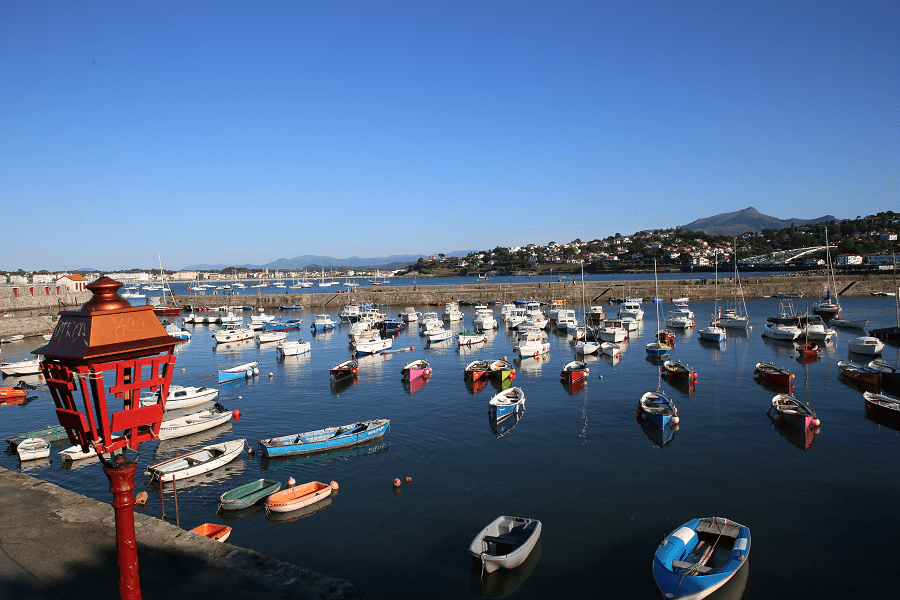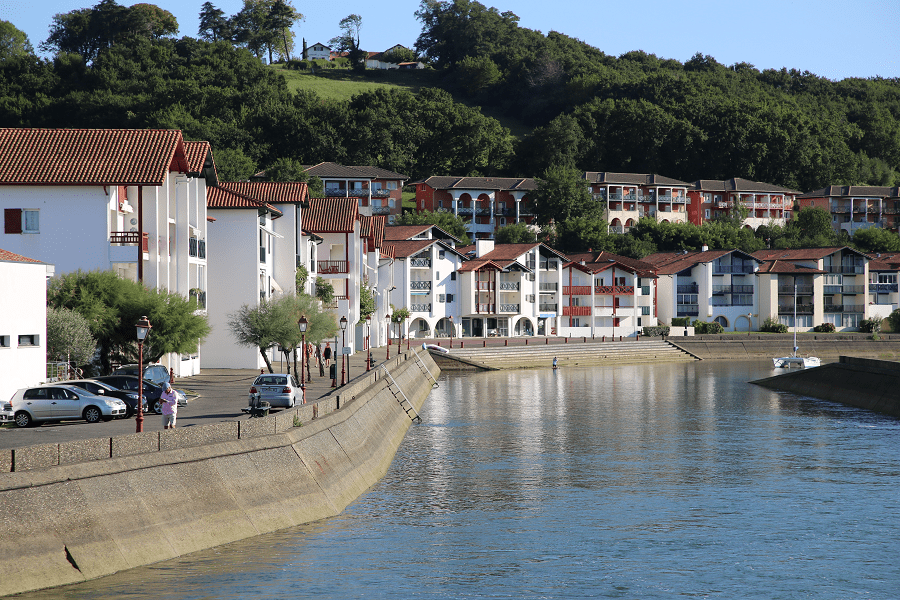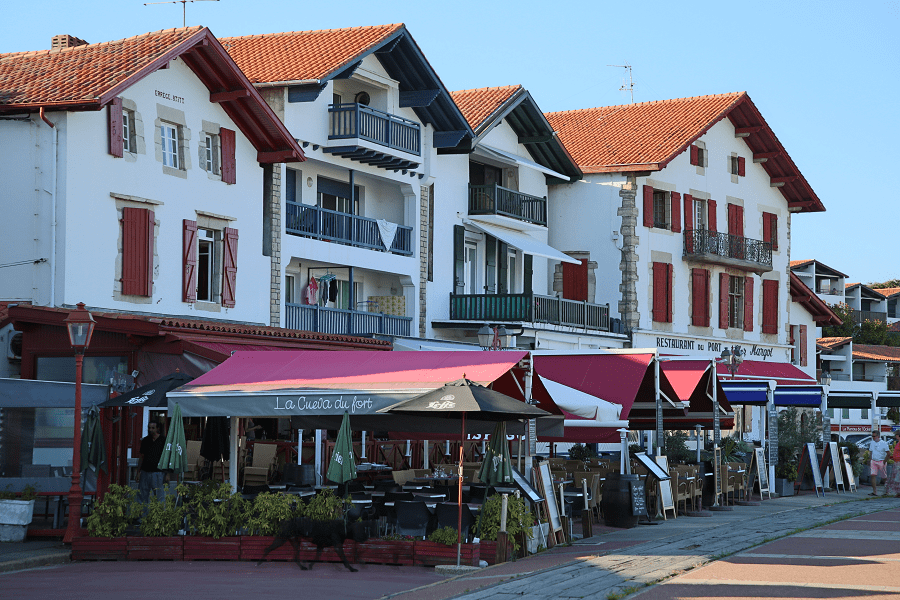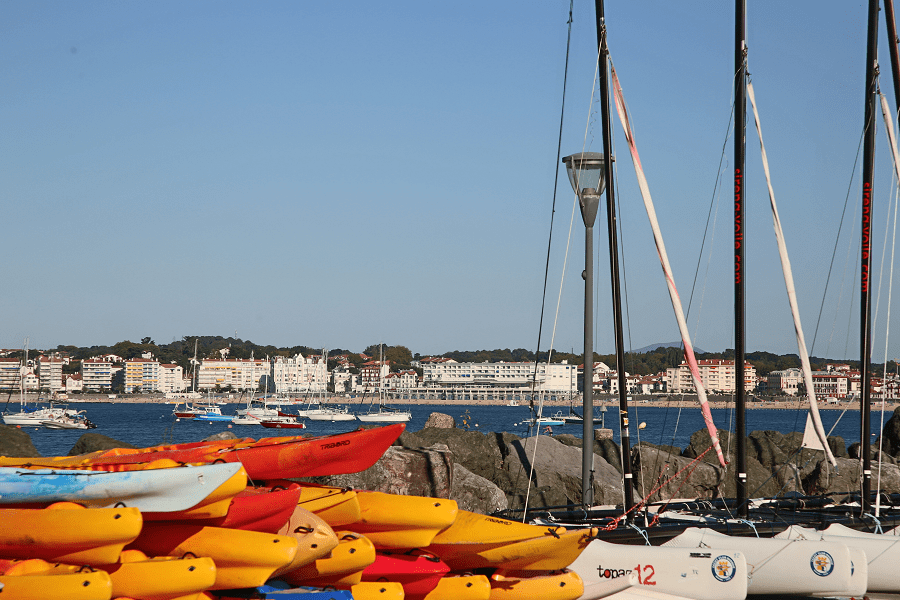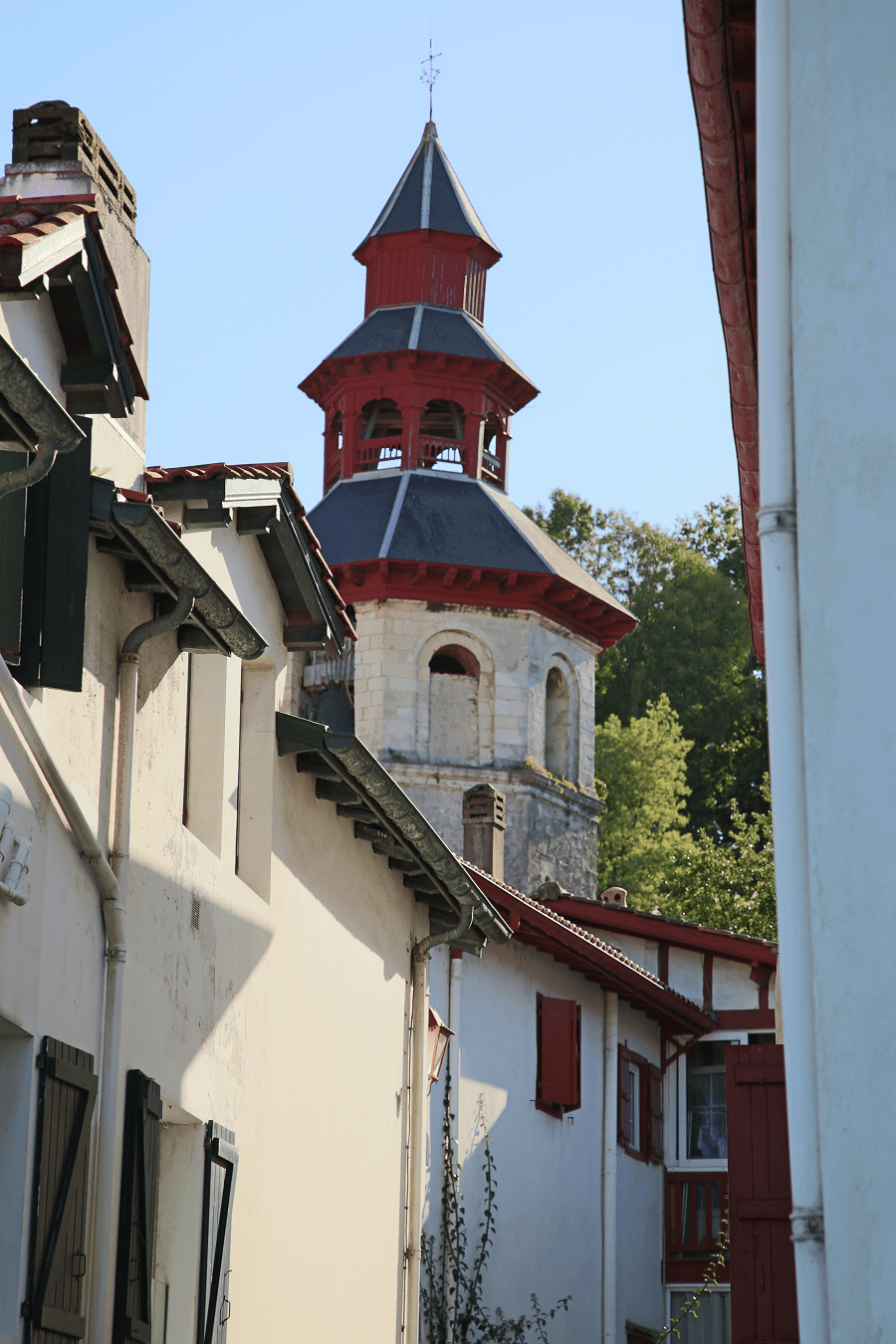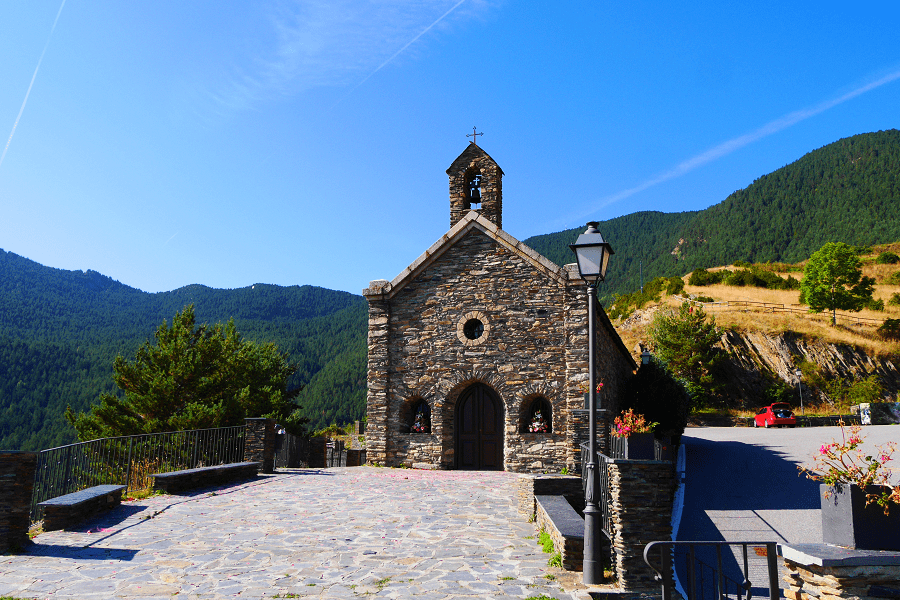Ciboure is a municipality, located in the Atlantic Pyrenees Department (Pyrénées-Atlantiques), in the New Aquitaine region (Nouvelle-Aquitaine, France). Ciboure (Ziburu in Basque) means «end of the bridge».
One part of the town is part of the Basque province of Labourd, the other is part of the French region of Bayonne.
Ciboure is divided from the town of Saint-Jean-de-Luz by the Nivelle river and the port in the Bay of Biscay. As a neighbor of the “royal city”, who greeted Louis XIV during his marriage with Maria Theresa, Infanta of Spain (Marie-Thérèse d’Autriche), in 1643, Ciboure also offers an equally outstanding heritage in the form of Socoa Fort, which guarded the exit to the Bay of Biscay.
Ciboure is one of the most popular Atlantic resorts in France today.
Tourism, sights, and what to see?
The main resort’s attraction is Socoa Fort, which was built under King Louis XIII (father of the “Sun King”), and then improved by Sebastien Vauban – a famous French engineer, Marshal of France, and writer (his fortresses are declared World Heritage of Humanity).
The fort is open for tourists in summer. They can go down to the lowest passages, as well as climb the fortress walls and the earthen rampart.
A sailing club was located in Ciboure in the late 1930s. This sport was very fashionable in the 20th century. The club is famous because Charlie Chaplin himself was training in it. The club has attempted to democratize sailing since the 1940s, and it was transformed into a public school supported by the Navy in the 1950s. However, the school was closed in the 2000s due to insufficient profitability.
Some tourists believe that the Ciboure streets are more colorful than those in neighboring Saint-Jean-de-Luz. The Maurice Ravel embankment and the parallel Pocolette Street are particularly noteworthy – they form an elegant “terrace” built up with characteristic houses with colorful balconies painted in typical Basque colors.
It is worth mentioning separately about the house of Maurice Ravel, the famous French composer and the composer of “Bolero”. He was born in the town in 1875 in the house N12 on the street which bears his name today.
The Saint-Vincent church (XVI century) is one of the main attractions in the town. The church’s main facade was restored in the 1875-1888 years in the Neo-Romanesque style (there was a chapel of the same name on the church site previously). The tall columns, a six-meter cross, and a St. Vincent statue are the church’s distinctive features.
The church’s interior is typical for Basque Country churches – it consists of three floors of galleries where parishioners gather during the mass.
An interesting historical fact: the Basque churches galleries and balconies were always occupied by male parishioners, women never rose above the first floor.
The church has many ancient sculptures, altar images, and church utensils taken from neighboring churches and monasteries during the French Revolution.
You should definitely visit the Art Deco style Villa Leïhorra. A historic monument from the twentieth century. A roaring twentieth architecture pearl. The villa is a visual expression of the refined lifestyle of “beautiful things” lovers and authenticity and harmony connoisseurs. The Villa is facing the Atlantic Ocean. The villa was built by the Basque architect Joseph Hiriart for his stepmother Caroline Signoret. The rich widow wanted to build a villa in her childhood country and gave Joseph Hiriart full reign to do what he wanted.
However, he had to fulfill three important conditions: to build the most beautiful villa on the coast, the villa should have a patio in memory of happy days in Mexico, and the widow’s bedroom furniture should be Basque. The architect did an excellent job, creating a true “refuge on the mainland” (that’s how Leïhorra is translated from Basque) on the Bordagain hill, from where an unforgettable panorama opens. The architect collaborated with art deco artists and local craftsmen, including Jacques Gruber, a glassblower and Cazaux, a ceramic artist. The villa has now been turned into a museum with original furniture, mosaic floors, and luxurious finishes after a 4-year restoration period.
Another tourist attraction is the 17th-century house on Dr. Mice Street (rue du Docteur-Micé): it served as Wellington troops’ hospital in 1813 and 1814.
There is the grave of the famous French writer Pierre Benoit (1886-1962) in Ciboure as well, the author of Atlantida and Mademoiselle de La Ferte novels.
The Beren farm is not far from the town and it is worth seeing as it includes a visit to the Basque canvas museum too.
Shopping
You can find small souvenir shops in the town center, as well as small private clothing and shoe stores.
Restaurants
“Luxury cuisine” – l’Ephemere
Tasty and inexpensive – Arteka, Snack du Fort Socoa, La Kabane De Socoa, Le Fournil de Socoa, La Plancha de l’Océan.
How to get there?
A car is the best way to travel in the area. The Basque country is served by the A63 toll motorway.
Shortest distances by car:
From Biarritz (tolls): 24 min (23.1 km) via A63
From Bayonne (tolls): 27 min (31.0 km) via A63
From Dax (tolls): 56 min (78.1 km) via A63
From Nantes (tolls): 5 h 14 min (557 km) via A83, A10 and A63
From Saumur (tolls): 5 h 17 min (515 km) via A10 and A63
From Bordeaux (tolls): 2 h 14 min (209 km) via A63
From La Rochelle (tolls): 3 h 52 min (394 km) via A10 and A63
From Toulouse (tolls): 3 h 6 min (319 km) via A64
From Carcassonne (tolls): 3 h 49 min (406 km) via A64
From Monaco (tolls): 8 h 14 min (895 km) via A64
From Nice (tolls): 7 h 58 min (873 km) via A64
From Cannes (tolls): 7 h 46 min (846 km) via A64
From Saint-Tropez (tolls): 7 h 45 min (819 km) via A64
From Marseille (tolls): 6 h 38 min (716 km) via A64
From Avignon (tolls): 5 h 54 min (643 km) via A9 and A64
From Montpellier (tolls): 5 h 10 min (555 km) via A64
From Béziers (tolls): 4 h 33 min (494 km) via A61 and A64
From Perpignan (tolls): 4 h 46 min (520 km) via A61 and A64
From Narbonne (tolls): 4 h 18 min (464 km) via A61 and A64
From Andorra (tolls): 5 h 8 min (427 km) via A64
From Bilbao (tolls): 1 h 29 min (131 km) via AP-8
From San Sebastian (tolls): 35 min (32.9 km) via AP-8
On the north-south axis there are roads: A 10 and A 62: Paris – Bordeaux – Langon – Pau; A 10 and A 63: Paris – Bordeaux – Bayonne; RN 134: Bordeaux – Pau – Oloron – Spain and A8: Bayonne – Spain.
By train:
The nearest train station is in the neighboring town of Saint-Jean-de-Luz (4:30 from Paris). The TGV line connects Saint-Jean-de-Luz with all the major cities: Paris (4:30), Bordeaux (2:10), Toulouse (4:15).
The Spanish Renfe railway connects Madrid with Hendaye (10 km from Saint-Jean-de-Luz), the journey time is 5 hours 50 minutes.
By plane:
There are two airports near the city:
Biarritz international airport (France), San Sebastian international airport (Spain)
Main information
Area: 7 km2
Population: 6,477
Coordinates: 43 ° 23′11 ″ N 1 ° 40′00 ″ W
Languages: French, Basque
Currency: Euro
Visa: Schengen
Time: Central European UTC +1
See here best sea and ocean resorts of France and Spain (223 objects)





